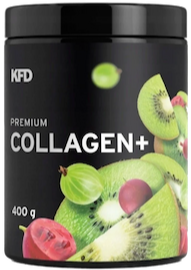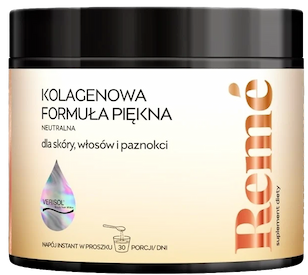Type II collagen benefits and supplements for joint health and more (marine, native, and undenatured)
Type II collagen is mainly responsible for the health of your joints. Find out what you need to know about it.


Learn more about our editorial process
.

Learn more about our editorial process
.

Learn more about our editorial process
.

Learn more about our editorial process
.
Why you can trust us
Articles on Natu.Care are written based on scientific research, data from government websites and other reliable sources. The texts are written in cooperation with doctors, nutritionists and other health and beauty experts. Articles are reviewed before publication and during significant updates.
.Learn more about our editorial process
.Information about advertisements
Content on Natu.Care may contain links to products from the sale of which we may receive a commission. When creating content, we adhere to high editorial standards and take care to be objective about the products discussed. The presence of affiliate links is not dictated by our partners, and we select the products we review ourselves completely independently.
.Learn more about our terms and Conditions
.It is the key to a healthy and active life. It keeps your joints strong, powerful and flexible, and allows you to enjoy your favourite sport - whatever your age.
Type 2 collagen will help you keep your joints (and more) in great shape for many years to come. That's why, together with pharmacist and educator Ilona Krzak, we're going to uncover the potential it holds for you.
Collagen type 2 is a great way to keep your joints in great shape for many years to come.
From this article you will learn:
- What type 2 collagen is. .
- Why type II collagen is important for your body. .
- What are the most important sources of type II collagen. .
- How you can rebuild collagen in your knees. .
- What collagen preparations are recommended by experts. .

Sprawdź, za co pokochały go tysiące klientek Kolagen Premium (10 000 mg) mango-marakuja -15% z kodem BLOG15
Natu.Care Kolagen Premium 10000 mg, mango-marakuja
Natu.Care Kolagen Premium dla zdrowia stawów, skóry, paznokci i włosów. Najlepsza przyswajalność. Optymalna dawka 5 000 lub 10 000 mg. Przebadany przez niezależne laboratorium.
Zobacz więcej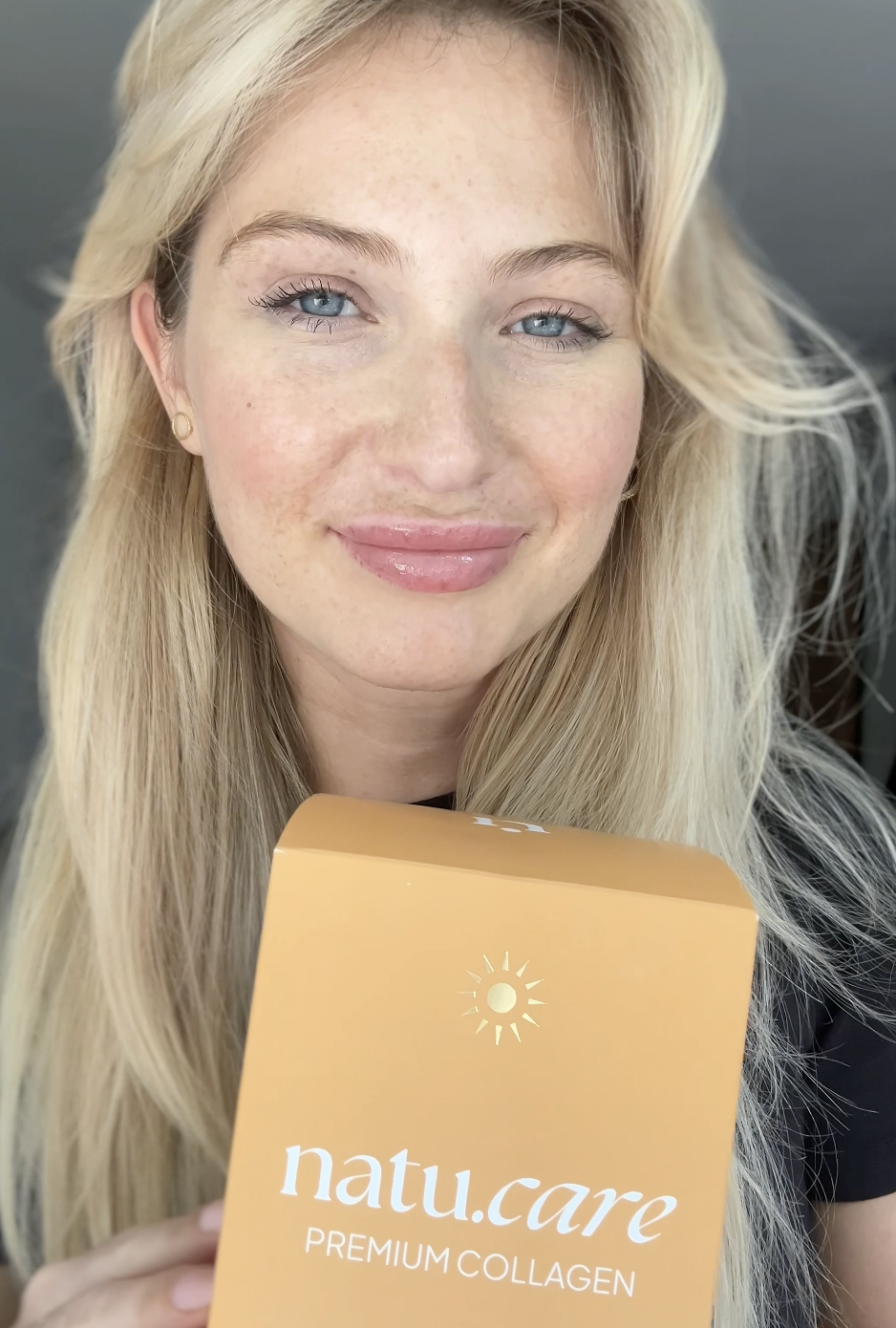
Wybrałam kolagen Natu.Care, ponieważ miał super opinie – a to było dla mnie bardzo ważne! Odkąd go stosuję, moja skóra znacznie się poprawiła i jest nawilżona, a na głowie pojawiły się nowe "baby hair".@Kasia S.
See also:
- Best Collagen (Ranking) .
- Collagen for joints
- Collagen for skin
- Facial collagen
- Collagen for wrinkles
- Drinking collagen
- Collagen for stretch marks
- Collagen for cellulite
- Collagen for bones
- Collagen for tendons
What is type 2 collagen?
Collagen type 2 is a protein naturally found in the body. It is one of the main building blocks of joint cartilage, helping to maintain its flexibility, strength and ability to withstand pressure and friction during movement. It is what keeps your joints functioning properly.
And now you will see what the more specific terms that often appear in the context of collagen mean:
Hydrolysed collagen type 2
Hydrolysed type 2 collagen has gone through a whole process of hydrolysis, in which it has been broken down into smaller molecules called peptides . This makes it much faster and easier to absorb than natural collagen, which has larger molecules.
Hydrolysis is commonly used in the preparation of food products - among other things, it makes infant formula milk safer and less allergenic .
See also:
Native collagen type 2
Native type 2 collagen is the unprocessed, natural form of collagen that occurs in living organisms and has not undergone any processing - thermal or chemical . Native type II collagen - unlike hydrolysed collagen - retains its original structure.
Non-denatured type 2 collagen
Non-denatured collagen is simply natural collagen.
Denaturation is the destruction of hydrogen bonds in proteins, which is an irreversible process. Collagen that has not been denatured is nothing more than freshly obtained collagen..
 .
.
Witold Tomaszewskidoctor of medical sciences
.By the way: have you ever eaten hard-boiled eggs? So you ate denatured egg whites. Have you roasted a turkey? Same thing. Virtually every protein we eat is denatured (unless - like Rocky Balboa - you drink raw eggs).
Research suggests that the protein is denatured.
Research suggests that non-denatured type 2 collagen is more effective against arthritis than its denatured form .
The use of native collagen preparations can lead to the development of so-called immune tolerance, which can reduce inflammation and degenerative processes in joints .
Where does type 2 collagen occur?
Type 2 collagen is mainly found in the articular cartilage, which is located between the bones in the joints, providing cushioning and promoting mobility. In addition, it is also found in the auricle, nasal septum and intervertebral discs .
Type 2 collagen makes up about 50% of the protein in articular cartilage and - depending on age - up to 80-90% of all the collagen there .
What does type 2 collagen help with and what is it responsible for? Properties and effects
Type II collagen plays a key role in maintaining the elasticity and strength of cartilage in joints, and also supports their regeneration . It is also responsible for joint cushioning - type 2 collagen forms a reticulated structure in cartilage that allows joints to be loaded and relieved during movement, thus protecting bones.
Type 2 collagen can help reduce joint pain and relieve inflammation. Some doctors also prescribe it to help with arthritic conditions and joint diseases, such as gonarthrosis, arthritis or rheumatoid arthritis (RA).
Collagen makes it possible for you to walk - or run - through life without pain.
A small dose of type 2 collagen - just 40 mg - is enough to bring visible results in the treatment of arthritis or RA..
 .
.
Ilona Krzak Master of Pharmacy

Sprawdź, za co pokochały go tysiące klientek Kolagen Premium (10 000 mg) mango-marakuja -15% z kodem BLOG15
Natu.Care Kolagen Premium 10000 mg, mango-marakuja
Natu.Care Kolagen Premium dla zdrowia stawów, skóry, paznokci i włosów. Najlepsza przyswajalność. Optymalna dawka 5 000 lub 10 000 mg. Przebadany przez niezależne laboratorium.
Zobacz więcej
Wybrałam kolagen Natu.Care, ponieważ miał super opinie – a to było dla mnie bardzo ważne! Odkąd go stosuję, moja skóra znacznie się poprawiła i jest nawilżona, a na głowie pojawiły się nowe "baby hair".@Kasia S.
What is the difference between type 1 and type 2 collagen?
Both types of collagen are crucial to the functioning of the body, but differ in occurrence and distribution, function and structure .
Collagen type I is mainly found in joints, tendons, ligaments, bones and teeth, forming quite thick and compact structures. Type 1 collagen provides mechanical strength and tensile capacity to many tissues.
Type II collagen forms thinner bonds and is found primarily in articular cartilage. It helps to maintain its integrity, elasticity and resilience, supporting joint health.
Collagen type II is a key component of joint health.
See also: What collagen to choose?
Collagen supplements - ranking the best supplements
Collagen loss can be affected by internal factors (e.g. genetics) or external factors (e.g. a diet low in protein, overexposure to the sun, air pollution or overly strenuous physical activity.
Collagen loss in osteoarticular tissues and skin is associated with age, hormonal profile, obesity, inflammation, lack of exercise, overloading mechanical damage to joints..
 .
.
Ilona Krzak Master of Pharmacy
Collagen supplementation will help you to replenish collagen, but it won't work wonders on its own if you don't help it. The specific effects and benefits will also depend on factors such as lifestyle and diet.
Natu.Care Collagen Premium 5000 mg, mango-maracuja
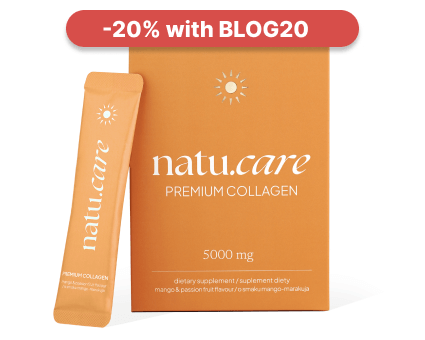
- Collagen content: 5000 mg marine collagen hydrolysate
- .
- Additional active ingredients: vitamin C, low molecular weight hyaluronic acid (and L-theanine and coenzyme Q10 in cocoa flavoured collagen or vitamin A and vitamin E in mango–passion fruit flavoured collagen)
- .
- Form: powder sachets
- .
- Dose: 1 sachet per day
- .
- Sufficient for: 30 days
- .
Product description
Fish collagen from the Natu.Care brand in a dose of 5000 mg. The formula contains a sufficient portion of the active substance to positively affect your joints, musculoskeletal system and immunity.
Take care of your tendons, joint cartilage, ligaments, muscles and even bones by supplying them with the building blocks to function properly. Move without bólu and provide the necessary support for any physical activity.
And as a „gratis” to regular supplementation, you will also receive firm skinóhand, healthy and shiny hair and strong nails.
Natu.Care Premium Collagen is available in two flavours – Cacao Bloom and Rise&Shine. Both formulas are based on the following active ingredients: marine collagen hydrolysate, wild roseóbud extract and hyaluronic acid.
Additionally, Cacao Bloom contains natural L-theanine, coenzyme Q10 and defatted Dutch cacao. Rise&Shine instead contains vitamin E and vitamin A.
These are the best collagens in the world.
These best fish collagens on the market also rós taste – Cacao Bloom is a treat for chocolate lovers. Rise&Shine will appeal to those whoóenjoy the refreshing taste of mangoófruit and passion fruit.
Pros and cons
Fish collagen from the Natu.Care brand in a dose of 5000 mg. The formula contains a sufficient portion of the active substance to positively affect your joints, musculoskeletal system and immunity.
Take care of your tendons, joint cartilage, ligaments, muscles and even bones by supplying them with the building blocks to function properly. Move without bólu and provide the necessary support for any physical activity.
And as a „gratis” to regular supplementation, you will also receive firm skinóhand, healthy and shiny hair and strong nails.
Natu.Care Premium Collagen is available in two flavours – Cacao Bloom and Rise&Shine. Both formulas are based on the following active ingredients: marine collagen hydrolysate, wild roseóbud extract and hyaluronic acid.
Additionally, Cacao Bloom contains natural L-theanine, coenzyme Q10 and defatted Dutch cacao. Rise&Shine instead contains vitamin E and vitamin A.
These are the best collagens in the world.
These best fish collagens on the market also rós taste – Cacao Bloom is a treat for chocolate lovers. Rise&Shine will appeal to those whoóenjoy the refreshing taste of mangoófruit and passion fruit.
Additional information
Fish collagen from the Natu.Care brand in a dose of 5000 mg. The formula contains a sufficient portion of the active substance to positively affect your joints, musculoskeletal system and immunity.
Take care of your tendons, joint cartilage, ligaments, muscles and even bones by supplying them with the building blocks to function properly. Move without bólu and provide the necessary support for any physical activity.
And as a „gratis” to regular supplementation, you will also receive firm skinóhand, healthy and shiny hair and strong nails.
Natu.Care Premium Collagen is available in two flavours – Cacao Bloom and Rise&Shine. Both formulas are based on the following active ingredients: marine collagen hydrolysate, wild roseóbud extract and hyaluronic acid.
Additionally, Cacao Bloom contains natural L-theanine, coenzyme Q10 and defatted Dutch cacao. Rise&Shine instead contains vitamin E and vitamin A.
These are the best collagens in the world.
These best fish collagens on the market also rós taste – Cacao Bloom is a treat for chocolate lovers. Rise&Shine will appeal to those whoóenjoy the refreshing taste of mangoófruit and passion fruit.
User review
Fish collagen from the Natu.Care brand in a dose of 5000 mg. The formula contains a sufficient portion of the active substance to positively affect your joints, musculoskeletal system and immunity.
Take care of your tendons, joint cartilage, ligaments, muscles and even bones by supplying them with the building blocks to function properly. Move without bólu and provide the necessary support for any physical activity.
And as a „gratis” to regular supplementation, you will also receive firm skinóhand, healthy and shiny hair and strong nails.
Natu.Care Premium Collagen is available in two flavours – Cacao Bloom and Rise&Shine. Both formulas are based on the following active ingredients: marine collagen hydrolysate, wild roseóbud extract and hyaluronic acid.
Additionally, Cacao Bloom contains natural L-theanine, coenzyme Q10 and defatted Dutch cacao. Rise&Shine instead contains vitamin E and vitamin A.
These are the best collagens in the world.
These best fish collagens on the market also rós taste – Cacao Bloom is a treat for chocolate lovers. Rise&Shine will appeal to those whoóenjoy the refreshing taste of mangoófruit and passion fruit.
Natu.Care Collagen Premium 10000 mg, cherry
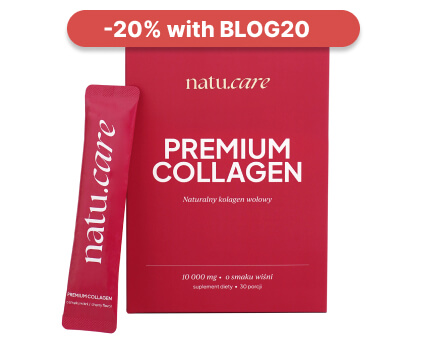
- Collagen content: 10,000 mg of hydrolyzed bovine collagen
- Additional active ingredients: vitamin C, low molecular weight hyaluronic acid, glucosamine, chondroitin, extract of Indian frankincense resin (boswellia serrata)
- Form: powder sachets for drinking
- Serving: 1 sachet per day
- Lasts for: 30 days
Product description
One of the strongest collagens on the market, providing as much as 10,000 mg per daily serving. This product can effectively support the condition of joints, skin, hair, and nails.
With this supplement, you will support your skeletal and joint system as well as your beauty, helping you visually halt the aging process and feel rejuvenated!
Pros and cons
Pros:
- The daily portion of collagen is very large – as much as 10,000 mg.
- Proven collagen formula – COLLinstant, whose effectiveness has been confirmed in clinical studies.
- Effective dose of hyaluronic acid, which additionally moisturizes the skin and positively affects joint health.
- Vitamin C supports the body's natural collagen production.
- Glucosamine is a fundamental building block of compounds found in joint cartilage and a component of collagen that gives elasticity to connective tissue in tendons.
- Chondroitin is a natural component found in the human body, mainly in cartilage. This large molecule (mucopolysaccharide) has the ability to absorb water, which helps maintain the elasticity and resilience of cartilage.
- Frankincense resin extract supports blood circulation and joint mobility and reduces their stiffness. It may help alleviate inflammatory conditions.
- The composition has been tested by the independent and accredited J.S. Hamilton laboratory.
Cons:
- None.
Additional information
Users praise Natu.Care Collagen Premium for the easy dissolving of the powder.
ALLDEYNN Collarose Fish
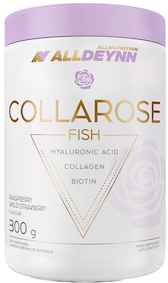
- Collagen content: 5000 mg hydrolysate fish collagen VERISOL F® .
- Additional active ingredients: vitamin C, hyaluronic acid, biotin
- Form: powder to dissolve in water .
- Dose: one scoop (6 g) of powder daily .
- Sufficient for: 50 days .
Product description
Atlantic cod collagen VERISOL F® contained in the formula are easily absorbed collagen peptides of fish origin. Regular supplementation can firm your skinóhand and slow down the ageing process. Your nails will become stronger and stop breaking. The addition of biotin will improve the condition of your hairów. The collagen portion is high enough to also have a good effect on your joints, muscles and bones.
Pros and cons
Atlantic cod collagen VERISOL F® contained in the formula are easily absorbed collagen peptides of fish origin. Regular supplementation can firm your skinóhand and slow down the ageing process. Your nails will become stronger and stop breaking. The addition of biotin will improve the condition of your hairów. The collagen portion is high enough to also have a good effect on your joints, muscles and bones.
Additional information
Atlantic cod collagen VERISOL F® contained in the formula are easily absorbed collagen peptides of fish origin. Regular supplementation can firm your skinóhand and slow down the ageing process. Your nails will become stronger and stop breaking. The addition of biotin will improve the condition of your hairów. The collagen portion is high enough to also have a good effect on your joints, muscles and bones.
Expert and user opinion
Atlantic cod collagen VERISOL F® contained in the formula are easily absorbed collagen peptides of fish origin. Regular supplementation can firm your skinóhand and slow down the ageing process. Your nails will become stronger and stop breaking. The addition of biotin will improve the condition of your hairów. The collagen portion is high enough to also have a good effect on your joints, muscles and bones.
DuoLife Collagen fish collagen 2500 mg
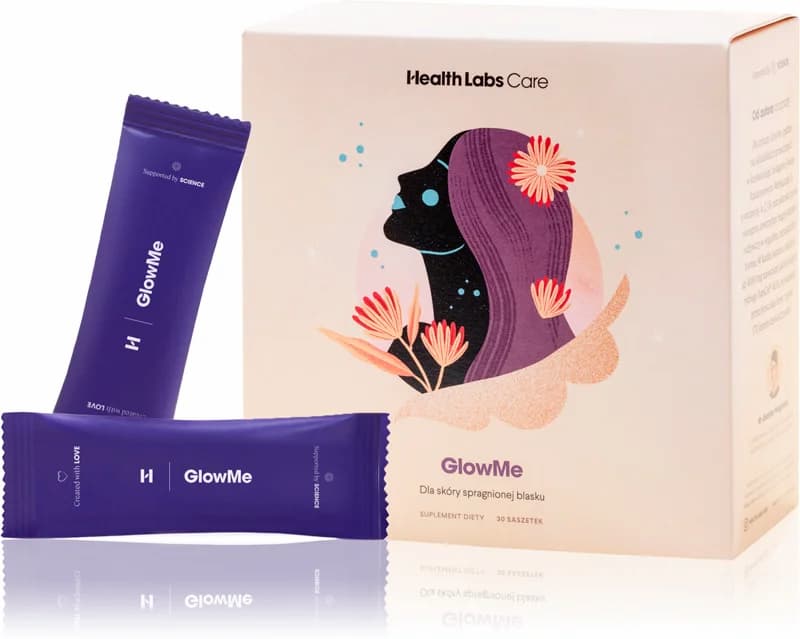
- Collagen content: 2500 mg collagen
- Additional active ingredients: vitamin C, silicon, glucosamine, hyaluronic acid, nettle and bamboo extracts
- Form: liquid to drink .
- Dose:25 ml .
- Sufficient for: 30 days .
Product description
100% natural collagen liquid without unnecessary ingredientsós. The composition of ingredientsós improves the appearance and condition of skinóry, hairów, nails. DuoLife is a good choiceór if you notice the first signs of skinóry ageing or want to stop this process. A tasty liquid, convenient to use.
Pros and cons
100% natural collagen liquid without unnecessary ingredientsós. The composition of ingredientsós improves the appearance and condition of skinóry, hairów, nails. DuoLife is a good choiceór if you notice the first signs of skinóry ageing or want to stop this process. A tasty liquid, convenient to use.
Additional information
100% natural collagen liquid without unnecessary ingredientsós. The composition of ingredientsós improves the appearance and condition of skinóry, hairów, nails. DuoLife is a good choiceór if you notice the first signs of skinóry ageing or want to stop this process. A tasty liquid, convenient to use.
User review
100% natural collagen liquid without unnecessary ingredientsós. The composition of ingredientsós improves the appearance and condition of skinóry, hairów, nails. DuoLife is a good choiceór if you notice the first signs of skinóry ageing or want to stop this process. A tasty liquid, convenient to use.
Pharmovit liquid collagen 10000 mg
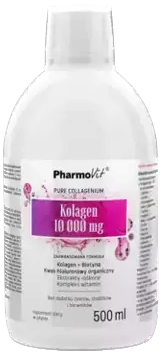
- Collagen content: 10000 mg hydrolysed bovine collagen types I and III .
- Additional active ingredients: hyaluronic acid, natural plant extracts, vitamin C, B vitamins, zinc, vitamin D
- Form: vials .
- Dose: 25 ml .
- Sufficient for: 20 days .
Product description
A solid daily dose of collagen for jointómuscle and bone health and beauty. The duo of collagen and vitamin C has a positive effect on each other, so that „the protein of youth” is better absorbed and more efficiently produced in the body.
Pros and cons
A solid daily dose of collagen for jointómuscle and bone health and beauty. The duo of collagen and vitamin C has a positive effect on each other, so that „the protein of youth” is better absorbed and more efficiently produced in the body.
Additional information
A solid daily dose of collagen for jointómuscle and bone health and beauty. The duo of collagen and vitamin C has a positive effect on each other, so that „the protein of youth” is better absorbed and more efficiently produced in the body.
KFD Premium Collagen+
Product description
High dose of collagen and a real bomb of vitamins C and D and organic sulphur. With this preparation the effects will come immediately. You will improve the firmness of your skin and reduce wrinkles. Your hair and nails will be strong and shiny.
A generous dose of collagen will improve the mobility of your jointsós, benefit your bone system and muscles. Do you do sports and need a product thatós able to keep up with your needs? This product will do the trick.
Pros and cons
High dose of collagen and a real bomb of vitamins C and D and organic sulphur. With this preparation the effects will come immediately. You will improve the firmness of your skin and reduce wrinkles. Your hair and nails will be strong and shiny.
A generous dose of collagen will improve the mobility of your jointsós, benefit your bone system and muscles. Do you do sports and need a product thatós able to keep up with your needs? This product will do the trick.
Additional information
High dose of collagen and a real bomb of vitamins C and D and organic sulphur. With this preparation the effects will come immediately. You will improve the firmness of your skin and reduce wrinkles. Your hair and nails will be strong and shiny.
A generous dose of collagen will improve the mobility of your jointsós, benefit your bone system and muscles. Do you do sports and need a product thatós able to keep up with your needs? This product will do the trick.
Expert opinion
High dose of collagen and a real bomb of vitamins C and D and organic sulphur. With this preparation the effects will come immediately. You will improve the firmness of your skin and reduce wrinkles. Your hair and nails will be strong and shiny.
A generous dose of collagen will improve the mobility of your jointsós, benefit your bone system and muscles. Do you do sports and need a product thatós able to keep up with your needs? This product will do the trick.
Product description
The dietary supplement from Remé contains beef collagen in a patented formula and vitamin C, whichóra aids its absorption. The formula comes in three flavours: neutral, orange-maracuja and strawberry-pomegranate. The formula can effectively support and improve the condition of the skinóry, hairóry and nails.
Pros and cons
The dietary supplement from Remé contains beef collagen in a patented formula and vitamin C, whichóra aids its absorption. The formula comes in three flavours: neutral, orange-maracuja and strawberry-pomegranate. The formula can effectively support and improve the condition of the skinóry, hairóry and nails.
Additional information
The dietary supplement from Remé contains beef collagen in a patented formula and vitamin C, whichóra aids its absorption. The formula comes in three flavours: neutral, orange-maracuja and strawberry-pomegranate. The formula can effectively support and improve the condition of the skinóry, hairóry and nails.
The dietary supplement from Remé contains beef collagen in a patented formula and vitamin C, whichóra aids its absorption. The formula comes in three flavours: neutral, orange-maracuja and strawberry-pomegranate. The formula can effectively support and improve the condition of the skinóry, hairóry and nails.
{ product:1eiyihgASLfslgpBv80Tk1 }}
{ product:3A6Dp6540L63Y3msHqwQCz }}
The advantage of using collagen hydrolysates over native (natural) collagen is their high digestibility, which contributes to better assimilation, distribution and more effective utilisation in the human body..
 .
.
Ilona Krzak Master of Pharmacy
Remember!
.Collagen supplementation is not a substitute for a balanced diet and doctor-recommended therapy. It is intended to be their support.

Sprawdź, za co pokochały go tysiące klientek Kolagen Premium (10 000 mg) mango-marakuja -15% z kodem BLOG15
Natu.Care Kolagen Premium 10000 mg, mango-marakuja
Natu.Care Kolagen Premium dla zdrowia stawów, skóry, paznokci i włosów. Najlepsza przyswajalność. Optymalna dawka 5 000 lub 10 000 mg. Przebadany przez niezależne laboratorium.
Zobacz więcej
Wybrałam kolagen Natu.Care, ponieważ miał super opinie – a to było dla mnie bardzo ważne! Odkąd go stosuję, moja skóra znacznie się poprawiła i jest nawilżona, a na głowie pojawiły się nowe "baby hair".@Kasia S.
See also:
- Best Collagen - Ranking .
- What destroys collagen in the body? .
- Where can I find collagen? .
- Drinking collagen - effects .
- Collagen deficiency .
Summary
- Type 2 collagen is the main component of cartilage.
- Collagen is the main component of cartilage.
- Makes your joints do what they're supposed to do and not complain - they're oiled, limber and don't hurt. .
- Supplementation with type 2 collagen can help to restore joint mobility, relieve pain and inflammation.
- Taking type II collagen should be considered by the elderly, physically active and overweight people, as well as competitive athletes who are subjected to heavy joint loading.
FAQ
.What is the best absorbed collagen?
.Collagen bioavailability depends mainly on the collagen source and the degree of processing. Fish collagen (or marine collagen) has the closest structure and structure to human collagen, making it better absorbed than, for example, beef collagen .
Collagen in gelatine, which is a pre-processed form of raw collagen, is absorbed better than raw collagen itself (good luck chewing on raw bones and skins!). Hydrolysed collagen has been broken down into smaller molecules - collagen peptides - so it's quicker and easier to absorb, and you get more benefits.
If you care about a clear answer, then know that probably hydrolysed fish collagen is the best absorbed form of collagen.
Is collagen with hyaluronic acid a good combination?
.Yes, the combination of hyaluronic acid and collagen can provide many benefits primarily for skin and joint health .Together they can, among other things, reduce wrinkles, hydrate the skin and add radiance, as well as improve joint mobility and reduce pain.
Check out fish collagen with hyaluronic acid and vitamin C from Sundose°.
Is collagen and gelatine the same thing?
.No, although collagen and gelatine are closely related. Collagen is a structural protein that you find in skin, tendons and bones, among other things. Gelatin - in simple terms - is a form of collagen that you obtain by cooking animal bones, skin and cartilage. In this process, collagen is initially broken down into smaller molecules. Hydrolysed collagen is the product of further processing of the youth protein to increase absorption and availability. (When you cook food, you do something relatively similar - you pre-digest the food with temperature to make it fast and digestible).
Both substances contain valuable amino acids - in particular proline and glycine - which benefit the skin, hair, nails, joints and digestive system.
What is important - collagen in hydrolysed form - is better absorbed than gelatine. And that's exactly the form to look for in collagen supplements.
How to rebuild collagen in the knee
.Rebuilding collagen in the knee will improve joint function and relieve pain. Here are some ways you can do this:
- Supplement - look for supplements with type II collagen, glucosamine and hyaluronic acid, which is the main component of synovial fluid.
- Enrich your diet with protein, vitamin C, calcium and phosphorus - these will stimulate collagen production, improve absorption from supplements and improve joint function. .
- Climit alcohol and quit cigarettes - stimulants destroy collagen in the body and negatively affect overall health. .
- Get to a healthy weight - the less you weigh, the less strain you put on your knees and other joints. .
If you have more serious problems, consider:
.- Medications and delivery injections - taking medications, medical devices and giving ampoule injections should always be done under the guidance of a doctor or pharmacist.
- Physiotherapy - the administration of medications, medical devices and giving ampoule injections should always be done under the guidance of a doctor or pharmacist.
- Physiotherapy - exercise will improve joint mobility. .
See also: Most powerful collagen (for joints and more) - Ranking
.Is fish collagen good for joints?
Of course! Fish collagen - also called marine collagen - has the closest structure and structure to human collagen. As a result, it is well absorbed and has a positive effect on joints.
Marine gelatins - due to their low hydroxyproline content - have less gelling (lubricating) power. Pork or bovine gelatins are definitely better.
Gelatins of the sea - due to their low hydroxyproline content - have less gelling power (lubrication).
See also: Collagen for joints
..
How to check your body's collagen levels
.There is no direct way to check collagen levels in the body, as collagen is broken down into amino acids before being absorbed by the digestive system. It is not possible to measure collagen in the body, for example, through blood tests or other readily available diagnostic tests.
One available test is the measurement of ICTP (C-terminal telopeptide of type I collagen) levels in the blood. ICTP is a special marker that indirectly relates to the level of collagen metabolism in the body - it indicates the rate of degradation of type I collagen, particularly in bones, skin or ligaments.
The ICTP measurement does not give direct information about the overall level of collagen in the body, but it can provide valuable information about processes related to bone resorption (mineral absorption) and other disorders of collagen metabolism.
If you suspect you have a collagen deficiency, consult your doctor to determine the causes and take appropriate therapeutic steps.
See also: Collagen deficiency - what symptoms to look out for?
.Will I get type 2 collagen as a medicine?
.Collagen preparations - both in pharmacies and specialist shops - are primarily dietary supplements. Collagen does not currently exist in drug form.
Sources
.See all
.Alcaide-Ruggiero, L., Molina-Hernández, V., Granados, M. M., & Domínguez, J. M. (2021). Main and Minor Types of Collagens in the Articular Cartilage: The Role of Collagens in Repair Tissue Evaluation in Chondral Defects. International Journal of Molecular Sciences, 22(24), Article 24. https://doi.org/10.3390/ijms222413329
Bakilan, F., Armagan, O., Ozgen, M., Tascioglu, F., Bolluk, O., & Alatas, O. (2016). Effects of Native Type II Collagen Treatment on Knee Osteoarthritis: A Randomized Controlled Trial. The Eurasian Journal of Medicine, 48(2), 95-101. https://doi.org/10.5152/eurasianjmed.2015.15030
Bello, A. E., & Oesser, S. (2006). Collagen hydrolysate for the treatment of osteoarthritis and other joint disorders:a review of the literature. Current Medical Research and Opinion, 22(11), 2221-2232. https://doi.org/10.1185/030079906X148373
Chu, Q., Lopez, M., Hayashi, K., Ionescu, M., Billinghurst, R. C., Johnson, K. A., Poole, A. R., & Markel, M. D. (2002). Elevation of a collagenase generated type II collagen neoepitope and proteoglycan epitopes in synovial fluid following induction of joint instability in the dog. Osteoarthritis and Cartilage, 10(8), 662-669. https://doi.org/10.1053/joca.2002.0812
Frankiewicz, T. (2017). Undenatured collagen type II (UC-II) - new insights into the pathophysiology and prevention and treatment of osteoarthritis. Rheumatology News, 2(2), 97-102. https://www.termedia.pl/Niezdenaturowany-kolagen-typu-II-UC-II-nowe-spojrzenie-na-patofizjologie-oraz-profilaktyke-i-leczenie-choroby-zwyrodnieniowej-stawow,104,30638,0,0.html
.Gamble, J. G., Edwards, C. C., & Max, S. R. (1984). Enzymatic adaptation in ligaments during immobilization. The American Journal of Sports Medicine, 12(3), 221-228. https://doi.org/10.1177/036354658401200311
.Hays, T., & Wood, R. A. (2005). A systematic review of the role of hydrolyzed infant formulas in allergy prevention. Archives of Pediatrics & Adolescent Medicine, 159(9), 810-816. https://doi.org/10.1001/archpedi.159.9.810
Itakura, H., Kishi, S., Kotajima, N., & Murakami, M. (2009). Decreased Vitreal Hyaluronan Levels with Aging. Ophthalmologica, 223(1), 32-35. https://doi.org/10.1159/000165682
Jafari, H., Lista, A., Siekapen, M. M., Ghaffari-Bohlouli, P., Nie, L., Alimoradi, H., & Shavandi, A. (2020). Fish Collagen: Extraction, Characterization, and Applications for Biomaterials Engineering. Polymers, 12(10), Article 10. https://doi.org/10.3390/polym12102230
Jokinen, J., Dadu, E., Nykvist, P., Käpylä, J., White, D. J., Ivaska, J., Vehviläinen, P., Reunanen, H., Larjava, H., Häkkinen, L., & Heino, J. (2004). Integrin-mediated Cell Adhesion to Type I Collagen Fibrils *. Journal of Biological Chemistry, 279(30), 31956-31963. https://doi.org/10.1074/jbc.M401409200
Lu, Z., Doulabi, B. Z., Huang, C., Bank, R. A., & Helder, M. N. (2010). Collagen Type II Enhances Chondrogenesis in Adipose Tissue-Derived Stem Cells by Affecting Cell Shape. Tissue Engineering Part A, 16(1), 81-90. https://doi.org/10.1089/ten.tea.2009.0222
Muthumari, K., Anand, M., & Maruthupandy, M. (2016). Collagen Extract from Marine Finfish Scales as a Potential Mosquito Larvicide. The Protein Journal, 35(6), 391-400. https://doi.org/10.1007/s10930-016-9685-7
Schauss, A. G., Stenehjem, J., Park, J., Endres, J. R., & Clewell, A. (2012). Effect of the novel low molecular weight hydrolyzed chicken sternal cartilage extract, BioCell Collagen, on improving osteoarthritis-related symptoms: A randomized, double-blind, placebo-controlled trial. Journal of Agricultural and Food Chemistry, 60(16), 4096-4101. https://doi.org/10.1021/jf205295u
Shaw, G., Lee-Barthel, A., Ross, M. L., Wang, B., & Baar, K. (2017). Vitamin C-enriched gelatin supplementation before intermittent activity augments collagen synthesis12. The American Journal of Clinical Nutrition, 105(1), 136-143. https://doi.org/10.3945/ajcn.116.138594
Skov, K., Oxfeldt, M., Thøgersen, R., Hansen, M., & Bertram, H. C. (2019). Enzymatic Hydrolysis of a Collagen Hydrolysate Enhances Postprandial Absorption Rate-A Randomized Controlled Trial. Nutrients, 11(5), Article 5. https://doi.org/10.3390/nu11051064
Surface modification of titanium with collagen/hyaluronic acid and bone morphogenetic protein 2/7 heterodimer promotes osteoblastic differentiation. (n.d.). Retrieved April 19, 2023, from https://www.jstage.jst.go.jp/article/dmj/39/6/39_2019-249/_article
Varani, J., Warner, R. L., Gharaee-Kermani, M., Phan, S. H., Kang, S., Chung, J., Wang, Z., Datta, S. C., Fisher, G. J., & Voorhees, J. J. (2000). Vitamin A Antagonizes Decreased Cell Growth and Elevated Collagen-Degrading Matrix Metalloproteinases and Stimulates Collagen Accumulation in Naturally Aged Human Skin1. Journal of Investigative Dermatology, 114(3), 480-486. https://doi.org/10.1046/j.1523-1747.2000.00902.x
Jelonek, L. (2023). Collagen. Everything you need to know (B. Turczynski, ed.; 1st ed.). Natu.Care. https://books.google.com/books?vid=9788396887801
Editorials
Meet the team

Ilona Krzak obtained her Master of Pharmacy degree from the Medical University of Wrocław. She did her internship in a hospital pharmacy and in the pharmaceutical industry. She is currently working in the profession and also runs an educational profile on Instagram: @pani_z_apteki

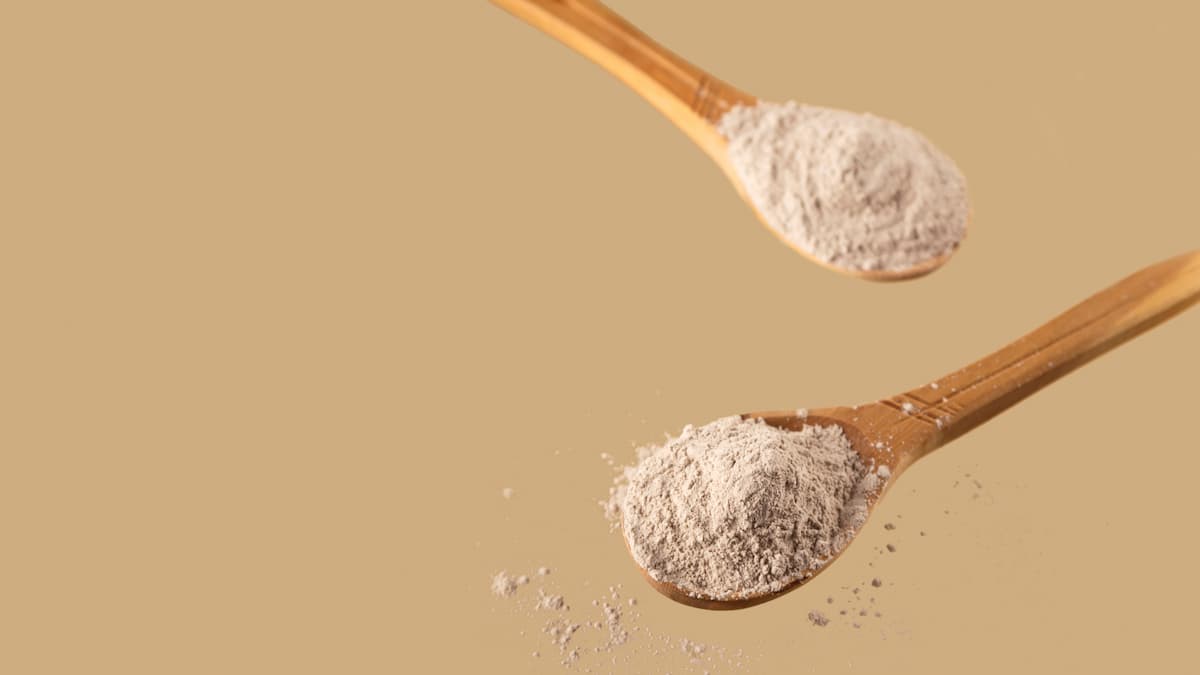
Everything you want to know about COLLinstant collagen.

Collibre collagen is an interesting supplement in shot form.
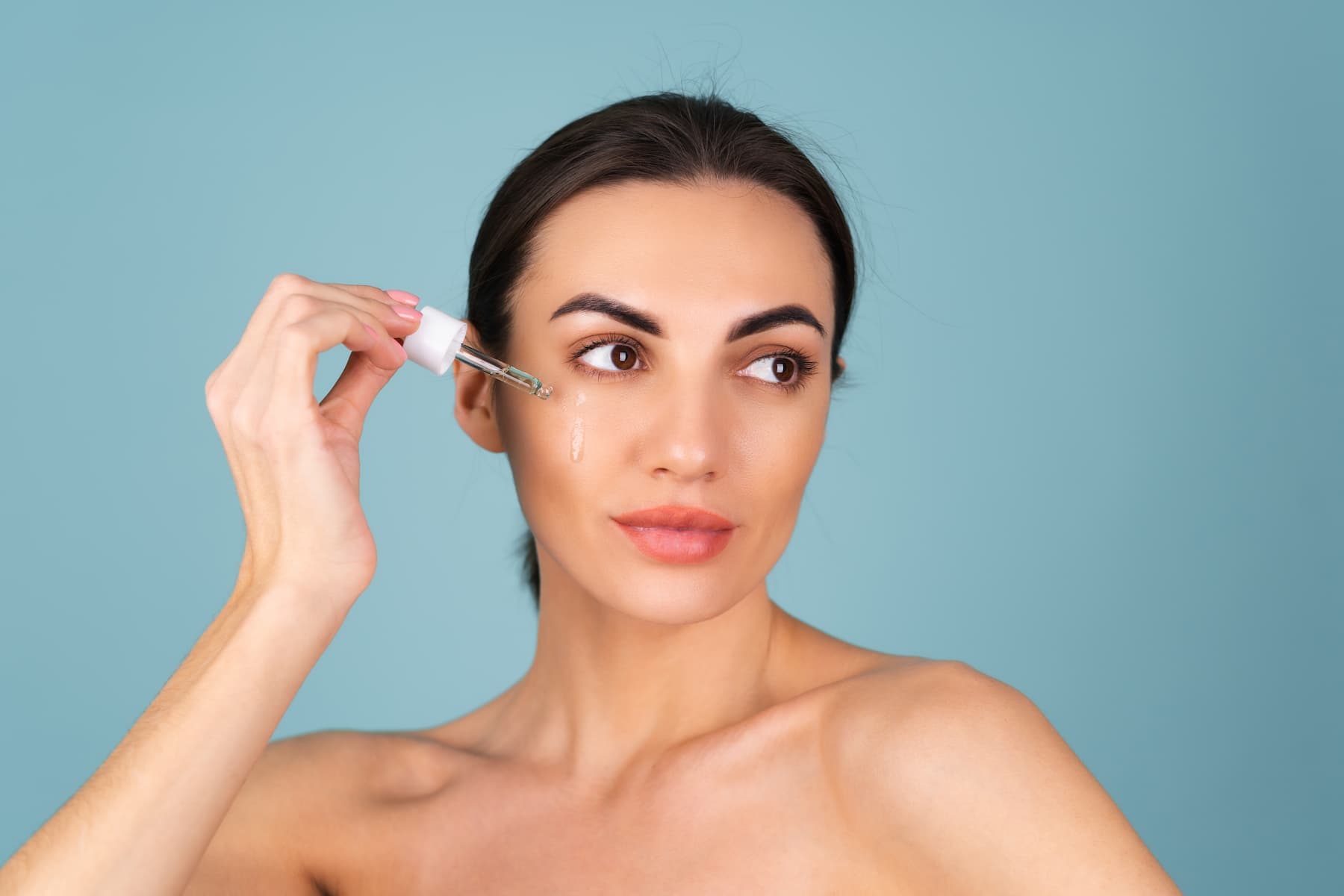
Solgar collagen with hyaluronic acid is a dietary supplement that supports skin and joint health.
